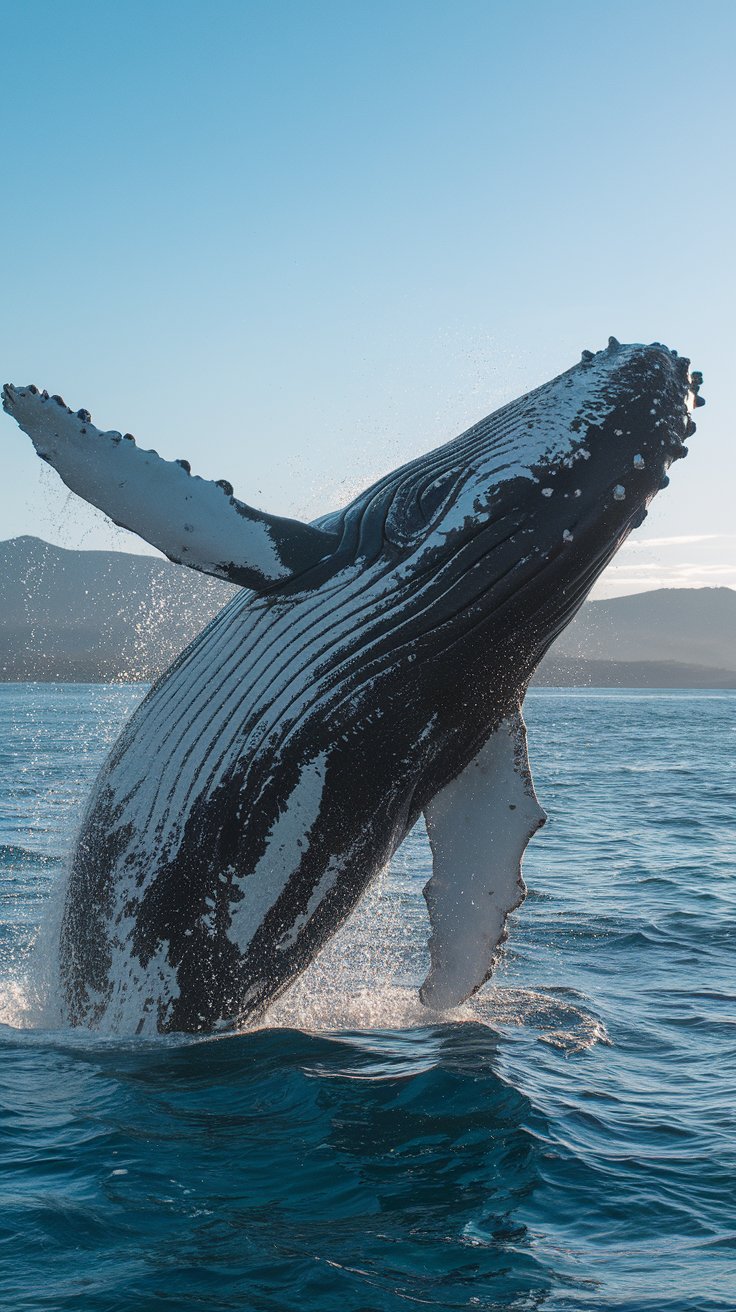Experiencing the majesty of whales in their natural habitat is an unparalleled adventure. These gentle giants captivate us with their intelligence, social bonds, and awe-inspiring presence. Across the United States, several destinations offer prime opportunities to witness these magnificent creatures. Here are the top spots for whale watching:
9. Jacksonville, Florida

Jacksonville offers a unique opportunity to observe the critically endangered North Atlantic right whale. With a population of fewer than 400 individuals, sightings are rare but possible from December through March as they migrate to calve in the warmer southern waters. While boat tours are limited to protect these vulnerable creatures, vigilant observers may spot them from the shore, making any encounter a remarkable and poignant experience.
8. Bar Harbor, Maine

Bar Harbor, located on Mount Desert Island, serves as a gateway to the rich marine biodiversity of the Gulf of Maine. From mid-April to October, the cold, nutrient-dense waters attract humpback, finback, and minke whales. Whale-watching cruises departing from Bar Harbor offer educational insights into these species and their habitats. The adjacent Acadia National Park provides additional opportunities for wildlife enthusiasts to explore the region’s natural beauty.
7. San Diego, California

San Diego’s strategic location along the Pacific Ocean makes it a prime spot for observing the gray whale migration. Each year, from mid-December to April, approximately 20,000 gray whales pass by San Diego’s coastline on their journey between Alaska and Baja California. Blue whales, the largest animals on Earth, can also be spotted from mid-June to September. Numerous tour operators offer excursions, and land-based viewing is possible from vantage points like the Cabrillo National Monument.
6. Juneau, Alaska

Alaska’s capital, Juneau, provides a dramatic backdrop for observing humpback whales during their summer feeding season. From May to September, these whales indulge in the abundant krill and small fish in the nutrient-rich Alaskan waters. The sight of a humpback executing a full breach against a backdrop of snow-capped mountains and glaciers is truly unforgettable. Additionally, orcas and gray whales are occasional visitors to the area, adding to the region’s marine diversity.
5. Virginia Beach, Virginia

The coastal waters off Virginia Beach serve as a winter haven for migrating humpback whales. From late December through March, these mammals can be spotted as they journey between feeding and breeding grounds. Whale-watching tours departing from the Virginia Aquarium & Marine Science Center offer educational experiences, highlighting the whales’ behaviors and the importance of marine conservation.
4. Cape Cod, Massachusetts

Cape Cod’s Stellwagen Bank National Marine Sanctuary is a bustling underwater plateau attracting numerous whale species. Humpback, fin, and minke whales frequent these nutrient-rich waters from April to October. The town of Provincetown serves as a hub for whale-watching tours, where visitors can witness these giants feeding, breaching, and nurturing their young. The sanctuary’s commitment to conservation ensures a sustainable environment for both whales and whale watchers.
3. San Juan Islands, Washington

Nestled between Washington State and Vancouver Island, the San Juan Islands are renowned for orca sightings. These apex predators, also known as killer whales, are often observed from May through September as they hunt for salmon in the Salish Sea. The islands’ rugged coastlines and pristine waters also host humpback, gray, and minke whales. Land-based observation points, such as Lime Kiln Point State Park on San Juan Island, offer excellent vantage points for whale enthusiasts.
2. Monterey Bay, California

Monterey Bay is a rich marine environment teeming with diverse wildlife. The bay’s deep submarine canyon brings nutrient-rich waters close to shore, attracting various whale species throughout the year. Gray whales migrate between December and April, while blue and humpback whales are commonly seen from May to November. The Monterey Bay National Marine Sanctuary ensures the protection of these species, and several responsible tour operators offer educational whale-watching excursions.
1. Maui, Hawaii

Maui stands out as a premier whale-watching destination, particularly for observing humpback whales. Each year, thousands migrate to Hawaii’s warm, shallow waters to breed and nurture their young. The Hawaiian Islands Humpback Whale National Marine Sanctuary protects these gentle giants, offering visitors a chance to witness their acrobatics and hear their haunting songs. The peak season runs from late December through April, with February often providing optimal viewing opportunities. Numerous boat tours depart from Lahaina Harbor, offering close encounters with these majestic mammals.
Embarking on a whale-watching adventure in these destinations not only offers the thrill of observing these magnificent creatures but also fosters a deeper appreciation for marine ecosystems and the importance of their conservation.

